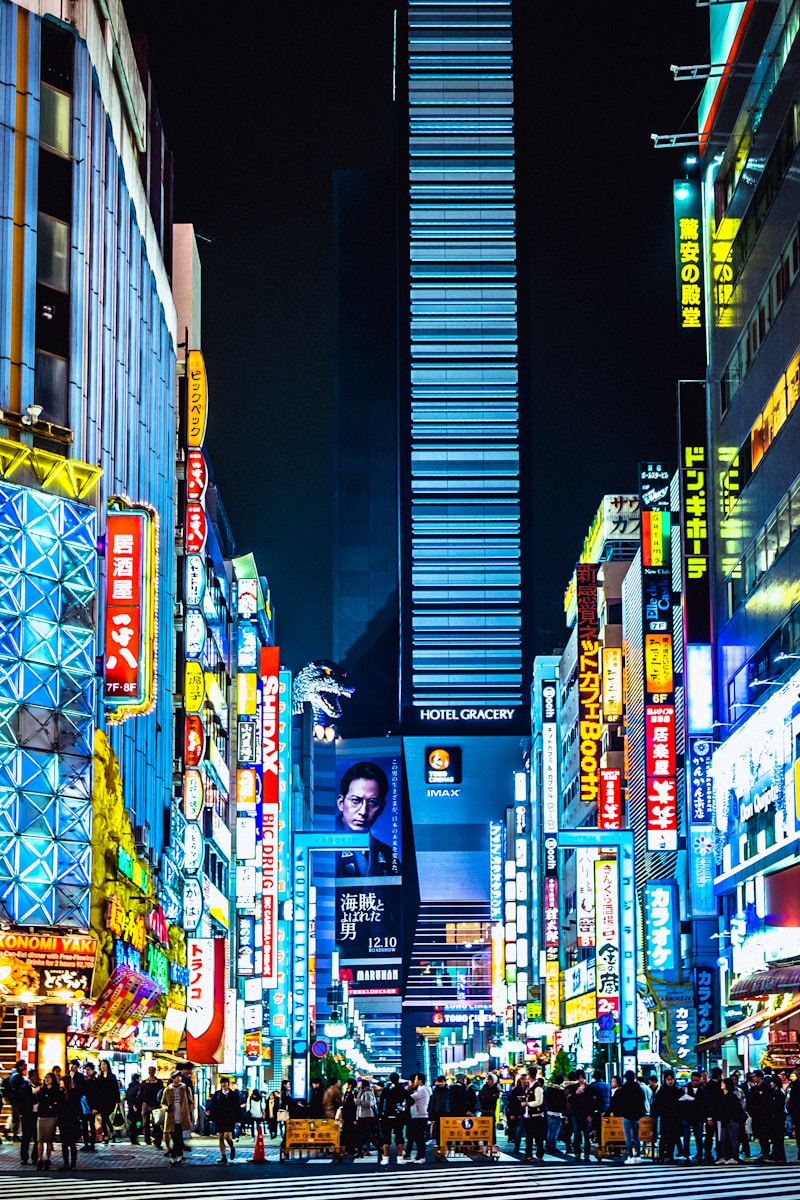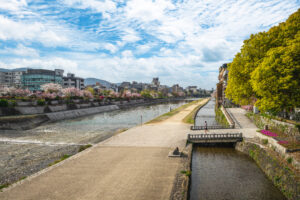In the heart of Japan, Tokyo stands as a living testament to the power of human ingenuity and resilience. From its early days as Edo, a seat of power during the feudal era, to its current status as a bustling metropolis that leads the world in technology and innovation, Tokyo’s urban evolution is a fascinating journey through time. Its skyline, culture, and infrastructure tell a story of rebirth, reinvention, and relentless progress. This article delves into the transformative phases of Tokyo, exploring how natural disasters, economic booms and busts, and global events have shaped the city’s urban landscape into the 21st century and beyond.
1. Tokyo’s Urban Tapestry: A Historical Overview
The narrative of Tokyo’s urban evolution begins in the 16th century, when it was known as Edo. Initially a small fishing village, its strategic location attracted the attention of powerful warlords. The establishment of Edo Castle in 1457 laid the groundwork for the city’s ascendance. By the 18th century, Edo had become one of the world’s largest cities, boasting a sophisticated network of canals, bridges, and streets. However, its urban fabric was primarily wooden, making it vulnerable to fires, which were frequent and sometimes devastating. Despite these challenges, Edo flourished, becoming a hub of commerce, culture, and art.
2. From Edo to Tokyo: A Metropolis Reborn
The transformation from Edo to Tokyo, which means "Eastern Capital," came about in the Meiji Restoration of 1868. This period marked the end of over two centuries of isolation and the beginning of Japan’s rapid modernization and Westernization. The Meiji government embarked on a massive urban development project, including the construction of railways, factories, and Western-style buildings. Tokyo’s urban landscape underwent a dramatic transformation, setting the stage for its emergence as a global power.
3. The Great Kanto Quake: Catalyst for Change
On September 1, 1923, Tokyo faced one of its darkest hours: the Great Kanto Earthquake. With a magnitude of 7.9, it devastated the Kanto region, leveling much of Tokyo and Yokohama. The disaster served as a catalyst for change, prompting a radical rethink of urban planning and construction methods. The reconstruction efforts led to the modernization of infrastructure, including wider streets, earthquake-resistant buildings, and improved public services, laying the foundations for the resilient metropolis Tokyo is today.
4. Post-War Rebirth: Tokyo’s Phoenix Moment
The aftermath of World War II saw Tokyo in ruins, its population decimated and infrastructure destroyed. Yet, the post-war era became Tokyo’s phoenix moment. Japan’s economic miracle of the 1950s and 1960s fueled a construction boom, with Tokyo at its heart. The city became a symbol of Japan’s recovery, with skyscrapers, the Shinkansen (bullet train), and the Tokyo Metropolitan Expressway reshaping its urban landscape. This period marked Tokyo’s resurgence as a leading global city, ready to face the future with confidence.
5. Tokyo’s Olympic Debut: A City Transformed
Tokyo’s hosting of the 1964 Summer Olympics marked a pivotal moment in its urban evolution. It was an opportunity to showcase Japan’s recovery and modernization to the world. Infrastructure projects, including the construction of new sports facilities, highways, and the iconic Shinkansen, transformed Tokyo. The Olympics also spurred advancements in telecommunications and broadcasting, further cementing Tokyo’s place on the global stage.
6. Bubble Era Boom: Skyline and Society Evolve
The 1980s were defined by Japan’s asset price bubble, a period of rapid economic expansion that dramatically affected Tokyo’s urban landscape. Massive investment in real estate led to the development of iconic districts like Shibuya and Roppongi. Skyscrapers such as the Tokyo Metropolitan Government Building reshaped the skyline, reflecting the city’s economic prowess. However, the bubble’s burst in the early 1990s led to a period of stagnation, prompting a reevaluation of Tokyo’s growth strategy.
7. The 21st Century: Tokyo’s Digital Revolution
Entering the 21st century, Tokyo embraced the digital revolution, positioning itself as a leader in technology and innovation. The city became a testing ground for smart technology, including robotics, artificial intelligence, and sustainable urban solutions. Efforts to digitize public services and infrastructure have made Tokyo one of the most technologically advanced cities in the world, enhancing the quality of life for its residents and setting new standards for urban living.
8. Greening the Giant: Tokyo’s Eco-Friendly Shift
In recent years, Tokyo has pivoted towards sustainability, recognizing the importance of environmental stewardship in urban development. Initiatives like the "Tokyo Cap-and-Trade Program" have been instrumental in reducing greenhouse gas emissions, while the promotion of green spaces, renewable energy, and eco-friendly transportation reflects Tokyo’s commitment to a greener future. The city aims to balance its urban growth with the well-being of the planet, setting an example for megacities worldwide.
9. Tokyo’s Infrastructure Innovations Unveiled
Tokyo continues to lead with cutting-edge infrastructure innovations that redefine urban living. Developments in seismic technology make buildings and transport networks among the safest in the world, critical for a city prone to earthquakes. The city’s comprehensive public transport system, highlighted by its efficient rail network, sets the global standard for mobility. Additionally, Tokyo’s push for digital transformation in public services ensures that the city remains at the forefront of smart urban management.
10. Reinventing Space: Tokyo’s Urban Regeneration
With space at a premium, Tokyo has become adept at reinventing and repurposing its urban environment. The concept of "machizukuri," or community-building, has led to the revitalization of older districts, blending tradition with modernity. Innovative architectural solutions, such as multi-use developments and vertical gardens, address the challenges of urban density while enhancing livability. Tokyo’s dynamic approach to urban space illustrates its capacity for continuous evolution.
11. Tokyo 2020: A New Era for Urban Sustainability
The Tokyo 2020 Olympics, albeit delayed due to the COVID-19 pandemic, symbolized a new era for urban sustainability. Embracing the motto "Be better, together – For the planet and the people," the event highlighted Tokyo’s green initiatives, including the use of renewable energy, sustainable materials, and a push towards zero emissions. The Games served as a platform for Tokyo to showcase its sustainable urban development strategies and reaffirmed its commitment to environmental stewardship.
12. Looking Ahead: The Future of Tokyo’s Urban Landscape
The future of Tokyo’s urban landscape is poised on the edge of innovation and sustainability. As the city looks ahead, it faces challenges such as an aging population, climate change, and the need for economic revitalization. However, Tokyo’s history of resilience and adaptability provides a blueprint for its future development. By leveraging technology, embracing sustainability, and fostering community, Tokyo is set to continue its journey as a global leader in urban evolution, reimagining what a metropolis can be in the 21st century and beyond.
Tokyo’s urban evolution is a testament to the city’s enduring spirit and capacity for transformation. From its beginnings as a small fishing village to its current status as a technological and environmental pioneer, Tokyo has navigated centuries of change, emerging stronger with each challenge. As it moves into the future, Tokyo remains a beacon of innovation, sustainability, and resilience, redefining the possibilities of urban living for the rest of the world. Tokyo’s journey continues, a perpetual rebirth, as it maps out new frontiers in the art and science of metropolitan life.




